
伤口世界
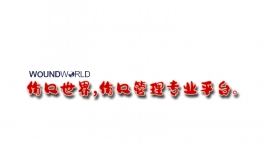
- 星期二, 06 2月 2024
Implementation of a patient-centered remote wound monitoring system for management of diabetic foot ulcers
Alana C. Keegan1,2, Sanuja Bose 2 , Katherine M. McDermott 2 ,Midori P. Starks White 2 , David P. Stonko2 , Danielle Jeddah3 , Eilat Lev-Ari 3 , Joanna Rutkowski 2 , Ronald Sherman2 , Christopher J. Abularrage 2 , Elizabeth Selvin 4 and Caitlin W. Hicks 2 *
1 Department of Surgery, Sinai Hospital of Baltimore, Baltimore, MD, United States, 2Division of Vascular Surgery and Endovascular Therapy, Johns Hopkins University, Baltimore, MD, United States, 3Department of Clinical Development, Healthy.io Ltd., Tel Aviv, Israel, 4Department of Epidemiology, Johns Hopkins School of Public Health, Baltimore, MD, United States
Background: Regular clinical assessment is critical to optimize lower extremity wound healing. However, family and work obligations, socioeconomic, transportation, and time barriers often limit patient follow-up. We assessed the feasibility of a novel, patient-centered, remote wound management system (Healthy.io Minuteful for Wound Digital Management System) for the surveillance of lower extremity wounds.
Methods: We enrolled 25 patients from our outpatient multidisciplinary limb preservation clinic with a diabetic foot ulcer, who had undergone revascularization and podiatric interventions prior to enrollment. Patients and their caregivers were instructed on how to use the digital management system and asked to perform one at-home wound scan per week for a total of 8 weeks using a smartphone application. We collected prospective data on patient engagement, smartphone app useability, and patient satisfaction.
Results: Twenty-five patients (mean age 65.5 ± 13.7 years, 60.0% male, 52.0% Black) were enrolled over 3 months. Mean baseline wound area was 18.0 ± 15.2 cm2 , 24.0% of patients were recovering from osteomyelitis, and post-surgical WiFi stage was 1 in 24.0%, 2 in 40.0%, 3 in 28.0%, and 4 in 8.00% of patients. We provided a smartphone to 28.0% of patients who did not have access to one that was compatible with the technology. Wound scans were obtained by patients (40.0%) and caregivers (60.0%). Overall, 179 wound scans were submitted through the app. The mean number of wound scans acquired per patient was 0.72 ± 0.63 per week, for a total mean of 5.80 ± 5.30 scans over the course of 8 weeks. Use of the digital wound management system triggered an early change in wound management for 36.0% of patients. Patient satisfaction was high; 94.0% of patients reported the system was useful.
Conclusion: The Healthy.io Minuteful for Wound Digital Management System is a feasible means of remote wound monitoring for use by patients and/or their caregivers.
KEYWORDS
diabetic foot ulcer (DFU), diabetes, smartphone application (app), telemedicine, technology, smartphone, diabetic foot
OPEN ACCESS
EDITED BY
Zhengyi Tang, Shanghai Jiao Tong University, China
REVIEWED BY
Rasoul Goli,
Urmia University of Medical Sciences, Iran Adam Isaac, Foot and Ankle Specialists of the MidAtlantic (FASMA), LLC, United States
*CORRESPONDENCE
Caitlin W. Hicks 该Email地址已收到反垃圾邮件插件保护。要显示它您需要在浏览器中启用JavaScript。
RECEIVED 02 February 2023
ACCEPTED 09 May 2023
PUBLISHED 24 May 2023
CITATION
Keegan AC, Bose S, McDermott KM, Starks White MP, Stonko DP, Jeddah D, Lev-Ari E, Rutkowski J, Sherman R, Abularrage CJ, Selvin E and Hicks CW (2023) Implementation of a patientcentered remote wound monitoring system for management of diabetic foot ulcers. Front. Endocrinol. 14:1157518. doi: 10.3389/fendo.2023.1157518
COPYRIGHT
© 2023 Keegan, Bose, McDermott, Starks White, Stonko, Jeddah, Lev-Ari, Rutkowski, Sherman, Abularrage, Selvin and Hicks. This is an open-access article distributed under the terms of the Creative Commons Attribution License (CC BY). The use, distribution or reproduction in other forums is permitted, provided the original author(s) and the copyright owner(s) are credited and that the original publication in this journal is cited, in accordance with accepted academic practice. No use, distribution or reproduction is permitted which does not comply with these terms.
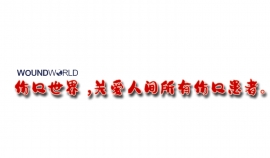
- 星期一, 05 2月 2024
“Twincretin” tirzepatide significantly SURPASSes comparator effects on glucose, weight and quality of life
The significant glucose-lowering and weight-loss benefits achieved with tirzepatide, the first “twincretin” (long-acting dual GIP/GLP-1 receptor agonist) therapy, could challenge and change current type 2 diabetes management strategies, resulting in tighter glycaemic control and in earlier use of tirzepatide, according to this recently published review by Australian authors. In randomised controlled and open-label studies in the SURPASS clinical programme in people with type 2 diabetes, tirzepatide achieved greater glucose-lowering, weight loss and other metabolic benefits compared with placebo, semaglutide and basal insulins across a broad range of populations, with low rates of hypoglycaemia and with comparable adverse event and safety profiles to GLP-1 receptor agonists. Overall, 43–62% of people treated once weekly with the highest tirzepatide dose (15 mg) achieved normoglycaemia, defined as HbA1c <5.7% (<39 mmol/mol), the lower end of the prediabetes/non-diabetic hyperglycaemia range used in the USA. Up to half achieved normoglycaemia and weight loss of ≥5%, without hypoglycaemia. A separate review brings together the results of the patient-reported outcome measures used in the SURPASS programme studies, exploring the impact of tirzepatide treatment on overall quality of life, ability to perform physical activities of daily living and treatment satisfaction. Significant quality of life benefits were demonstrated with tirzepatide compared to placebo or active comparators.
Pam Brown GP in Swansea
Citation: Brown P (2023) “Twincretin” tirzepatide significantly SURPASSes comparator effects on glucose, weight and quality of life. Diabetes & Primary Care 25: 209–11
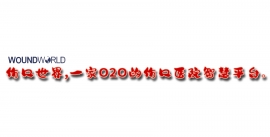
- 星期五, 02 2月 2024
Using laboratory and clinical data to inform best practice in the delivery of negative pressure wound therapy
This report outlines the proceedings of an industry-sponsored symposium (held at the European Wound Management Association 2023 Conference) during which an international panel of scientific and clinical experts shared research data relating to the mechanism of action of negative pressure wound therapy (NPWT) and its clinical relevance. The speakers also shared their clinical experiences of using a canister-based, singleuse NPWT system in the management of both open wounds and closed surgical incision sites.
Speakers: (Clockwise from top left) Marino Ciliberti (chair), Amit Gefen , Anette Svensson Henriksson and Sanna Kouhia
Marino Ciliberti is MD Surgeon, Director of the Wound Care Centre, Rete Aziendale Di Riparazione Tissutale, Aslnapoli3sud, Gragnano, Campania, Italy;
Amit Gefen is Professor of Biomedical Engineering Herbert J Berman Chair in Vascular Bioengineering, Department of Biomedical Engineering, Tel Aviv University, Tel Aviv, Israel; Skin Integrity Research Group (SKINT), University Centre for Nursing and Midwifery, Department of Public Health and Primary Care, Ghent University, Ghent, Belgium; Department of Mathematics and Statistics, Faculty of Sciences, Hasselt University, Hasselt, Belgium;
Anette Svensson Henriksson is Senior Scientist, Research & Development, Mölnlycke Healthcare, Gothenburg, Sweden;
Sanna Kouhia is Consultant in Vascular Surgery, Consultant in General Surgery, Specialist in Wound Care, Espoo, Finland
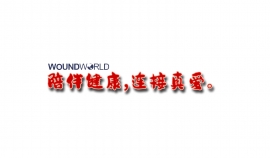
- 星期三, 31 1月 2024
Improving detection rates of vitamin B12 deficiency caused by metformin
Our companion article outlines how metformin use can lead to a clinically significant deficiency in vitamin B12, and describes the problems this can cause. In this comment, we outline a project conducted in four primary care practices that aimed to improve metformin-related vitamin B12 deficiency detection rates in people with diabetes.
Shafali Khanom
Medical Student, University of Sofia, Bulgaria
Mosammath Monira Khatun
Medical Student, Imperial College London
Reshma Rasheed
GP, Chapel Street Surgery, Billericay
Citation:
Khanom S, Khatun MM, Rasheed R (2023) Improving detection rates of vitamin B12 deficiency caused by metformin. Journal of Diabetes Nursing
[Early view publication]
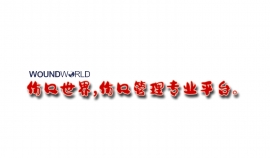
- 星期二, 30 1月 2024
When your child is diagnosed with type 1 diabetes: Experiences of parents who also have the condition
Melanie Burcham
While it is rare for both a parent and their child to have type 1 diabetes, paediatric diabetes teams may come across this situation. This article explores the experiences and opinions of four such parents following their child’s diagnosis, and how diabetes teams can meet the needs of these families. The themes discussed include the emotional impact of a child’s type 1 diagnosis on the parent, and how their experience and knowledge of the condition can benefit their child, as well as providing challenges resulting from the parent’s own trauma of living with diabetes. Strategies for supporting and educating families following a child’s diagnosis, which include acknowledging the personal experiences that a parent with type 1 diabetes can bring and discussing emotional health routinely, are explored.
Citation: Burcham M (2023)
When your child is diagnosed with type 1 diabetes: Experiences of parents who also have the condition. Journal of Diabetes Nursing 27: JDN288
Article points
1. When a parent with type 1 diabetes has a child diagnosed with the same condition, the paediatric diabetes team must consider how to meet the particular needs of that family.
2. The parent’s experience of type 1 diabetes may bring feelings of guilt and grief, and other emotional challenges, as well as potential benefits arising from their knowledge of the condition. Paediatric diabetes teams need to acknowledge the additional pressures that such parents face, identify their specific needs and evaluate how to support the family.
Key words
- Children with type 1 diabetes
- Diabetes distress
- Emotional support
- Parents with type 1 diabetes
Authors
Melanie Burcham, Paediatric Diabetes Clinical Nurse Specialist, Royal Free Hospital, London.
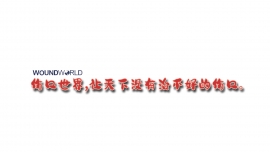
- 星期一, 29 1月 2024
Improved Bates-Jensen score following negative pressure wound therapy on wounds of various aetiologies: an experience from a tertiary care centre
Aim: The objective of this study is to evaluate the safety and efficacy of a negative pressure wound therapy (NPWT) device in trauma and other complex wounds.
Methods: The present clinical study is a prospective, interventional study conducted at a tertiary care center. NPWT was applied and the Bates-Jensen Score was calculated to assess the improvement in
wound healing outcomes.
Results: Twenty-two patients were assessed. The outcomes demonstrated that NPWT treatment reduced Bates-Jensen score when compared with the baseline score.
Conclusion: This indicates that NPWT therapy facilitates wound healing by increasing granulation tissue formation and lowering wound exudate levels.
Key words:
■Bates-Jensen Score,
■Negative pressure wound therapy
■Trauma Wounds
■Wound Exudate
■Wound Healing
■Wound management
Sushma Sagar is Professor, All India Institute of Medical Science, New Delhi, India;
Parvez Mohi Ud Din Dar is Senior Resident, All India Institute of Medical Sciences New Delhi;
Subodh Kumar is Professor, All India Institute of Medical Sciences New Delhi;
Amit Gupta is Professor, All India Institute of Medical Sciences New Delhi
This article first appeared in our sister publication Wounds Asia in volume 5 issue 2. Citation: Improved Bates-Jensen score following negative pressure wound therapy on wounds of various aetiologies: an experience from a tertiary care centre. Wounds Asia 5(3): 15–21
